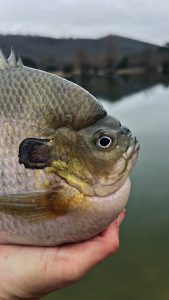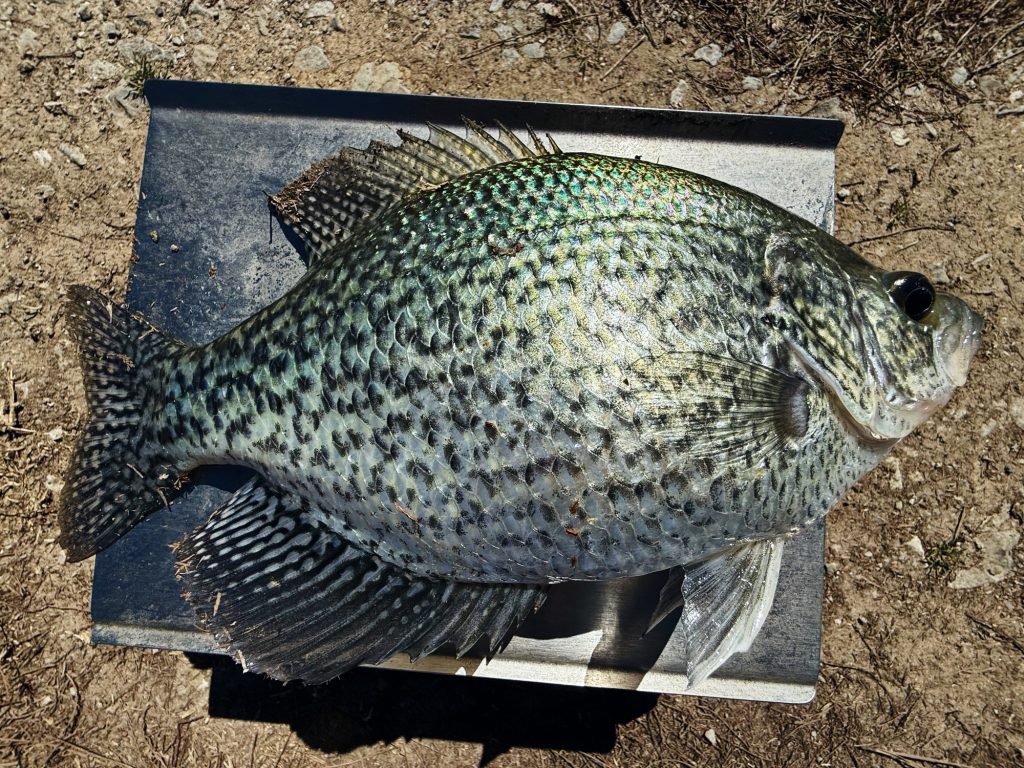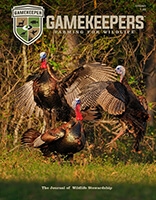When it comes to managing for big bluegills, you will learn this lesson early on. We have said many times you need the right ingredients to grow giants—the genetics have to be there, food chain/supplemental feeding program, happy water quality, adequate habitat and a selective harvest plan in place. When we embarked on this journey to grow these fish, we assumed we had one other ingredient in our favor. Environment.
We know that the coppernose bluegill (CNBG) has a cold limit and most hatcheries won’t stock them north of Nashville. Simply put, the CNBG is not made for cold conditions and doesn’t do well with rapid temperature swings or in places that get ice. This doesn’t mean that they can’t survive, but it’s a lot more challenging to grow them in that type of climate. It is important to note that where your fish are reared does play a role in cold hardiness. Southern strain CNBG are not acclimated for severe cold. We are in North Alabama and we get cold snaps but rarely do they last and we warm right back up to mild temperatures fairly quickly.

Sarah Parvin
The last three winters have been harsh. We have frozen over multiple times and cold air has really hung around. Prior to the last few years, we were able to pellet feed 12-months out of the year. The timing and amount of feed varies throughout the year but we fed 12-months straight with the greatest amount of feeding occurring during the fall season. Water temperatures supported us doing this and we know that is one of the most important ingredients to producing the fish that you see today.
When we shock surveyed in late December of 2024, the weather was terrible. The water temp was 51°F, the air temp was 40 and there was a 30 mph north wind. These are not ideal conditions for us or for getting fish up because they take longer to rise to the surface in colder water, but we managed to pull it off and the results were the best we’ve seen. This was the most impressive survey to date. I was staring at 8 and 9-inch fish that were registering at 250% and higher on the relative weight chart. To be fair, I had caught several short and round fish that had the same build so I knew something was changing or had changed.
If you see one fish that is different, that’s one thing, but to see a change in numbers is something else. A shift. A clear indication that forage availability had significantly increased for the “smaller fish.” Improvement in relative weights throughout the size class is something we have not seen in previous surveys because we had only started aggressively harvesting in the last 18 months. We had clear markers as to which fish to remove and which ones were going to be champions.
This new trend we saw, made it difficult to harvest 8 to10-inch fish with those kinds of stats. They are terrifyingly beautiful and look like something out of a sci-fi movie. Most people consider a 10-inch bluegill to weigh in about one pound on average, we are breaking that metric with an 8-inch fish. This type of result shows us that our fish have enough forage (and space!) to grow and grow rapidly. This is a direct result of quality feed and selective harvest. It takes time to show itself but when it does, it is obvious.
The boat was difficult to control on this day. The delay in the fish rising coupled with the strong winds made it hard to really get after it but after about two hours, we had seen enough and managed to remove close to 200-pounds of fish. One thing that is worth noting, we shocked up more shellcracker in this one survey than all other surveys from the last three years combined. They were everywhere and in a wide range of size classes.
At one point, I looked back at Shawn, who was driving the boat, and said “This is the most shellcrackers I’ve ever seen come up from here!” American Sport Fish brought the Team on this day and I am so glad that they did. We removed a bunch of crappies and they got to keep those for supper that evening. We were all very pleased with what we saw. Lots of laughter and high fives once we were done surveying. I went to bed that evening and felt like we were really dialed in and ready for 2025. Matter of fact, I have never felt more confident about the trajectory of our fishery than I did that evening.
About three weeks later, Alabama was hit with a Winter storm. We got a good four inches of snow and The Slab Lab went about 72 hours with thin ice from bank to bank. I busted up several spots and we warmed back up which helped remove the rest of the ice. We had normal temperatures for about ten days. Then the coldest air of the season hit us—pipe bursting cold. This time, when The Slab Lab froze over, it was a long duration event. We were frozen solid for about 11 days. The ice was thick. I knew we would see some sort of negative impact from this event. The swings in temperatures and the contrast from normal to ice can cause delayed mortality amongst southern fish. It can weaken them and make them susceptible to disease down the road, too.

Eric Engbretson
And it did. It took about five days from ice out but we started to see sick Shellcracker. In one day, I netted out 100 fish from around the banks. Of those 100 fish, some were barely swimming at the surface while others were already gone, 80% of them were shellcrackers. They were hit harder than the CNBG. There was physical evidence of disease present on each one. Over the next few days, we would have a few fish float and some would be covered with mud on one side indicating that they had been on the bottom for a while. We anticipated this. What will be the long term consequences of losing a large part of the shellcracker population? Well, that remains to be seen.
Here is what we did not anticipate after ice out. A super charged bloom. The water was a rich, emerald green. It got to a shade of green we have not seen before. A few days later, it went brown. We had to use our emergency aeration to bring our dissolved oxygen back up…in February. We were able to mitigate a large-scale event and we recovered quickly. As the days rolled on, we ended up with nearly four feet of visibility in the water. This is very rare for The Slab Lab. We would continue to see shellcracker mortality with a few fish here and there. We warmed up pretty quickly for the rest of February and March.
Water temps averaged 60 to 64°F and we began to feed again. Our fish were ready to eat and they did. The bass were on feed. The bluegills were on feed. And drumroll…maybe the crappies are too! This was a bit of a surprise because crappies are not known to take pellet feed. One mild day in January, I sat down on the main dock around dusk and made a cast adjacent to our feeder. I quickly got a strike and it was a crappie. I repeated this cast several times and several more crappies were caught. I didn’t think much of it while it was happening, I just figured I was in a school of them and I was going to enjoy it.
I noticed that the crappies were very healthy with a few of them being extra thick. Dad came down to the dock and he was looking at them and just couldn’t get over how thick they were. “You think they are on feed, Sarah?” I decided it was worth finding out the answer to that question and said “Let’s investigate.”

Sarah Parvin
As we cut open the crappie, I saw it. Pellet feed. The way that my brain works, before I can prove something, I have to disprove it first. There could be any number of reasons why pellet feed could find its way into a crappie’s belly. Maybe the fish was feeding on a smaller fish and inhaled a piece of feed that was in the water. That seemed reasonable enough to me. But that trend of pellet feed in the belly continued. It’s not totally out of the question but it is rare to have crappies on feed. I am not confident enough yet to say they are feed trained, though. As March continued on, our weather was warm and we were back up to our large scale feeding at dusk. Once the time changed, things really ramped up and we have seen the most explosive feedings to date. Imagine someone dropping a cinder block from above into the water, the sight and the sound of that is what we experience at feeding time. Even with the repercussions from the harsh winter, we are in a great position for 2025. More to come, including an update on the female coppernose bluegills with pronounced helmet development that we talked about in the past winter issue.
Join our weekly newsletter or subscribe to Gamekeepers Magazine.
Your source for information, equipment, know-how, deals and discounts to help you get the most from every hard-earned moment in the field.









